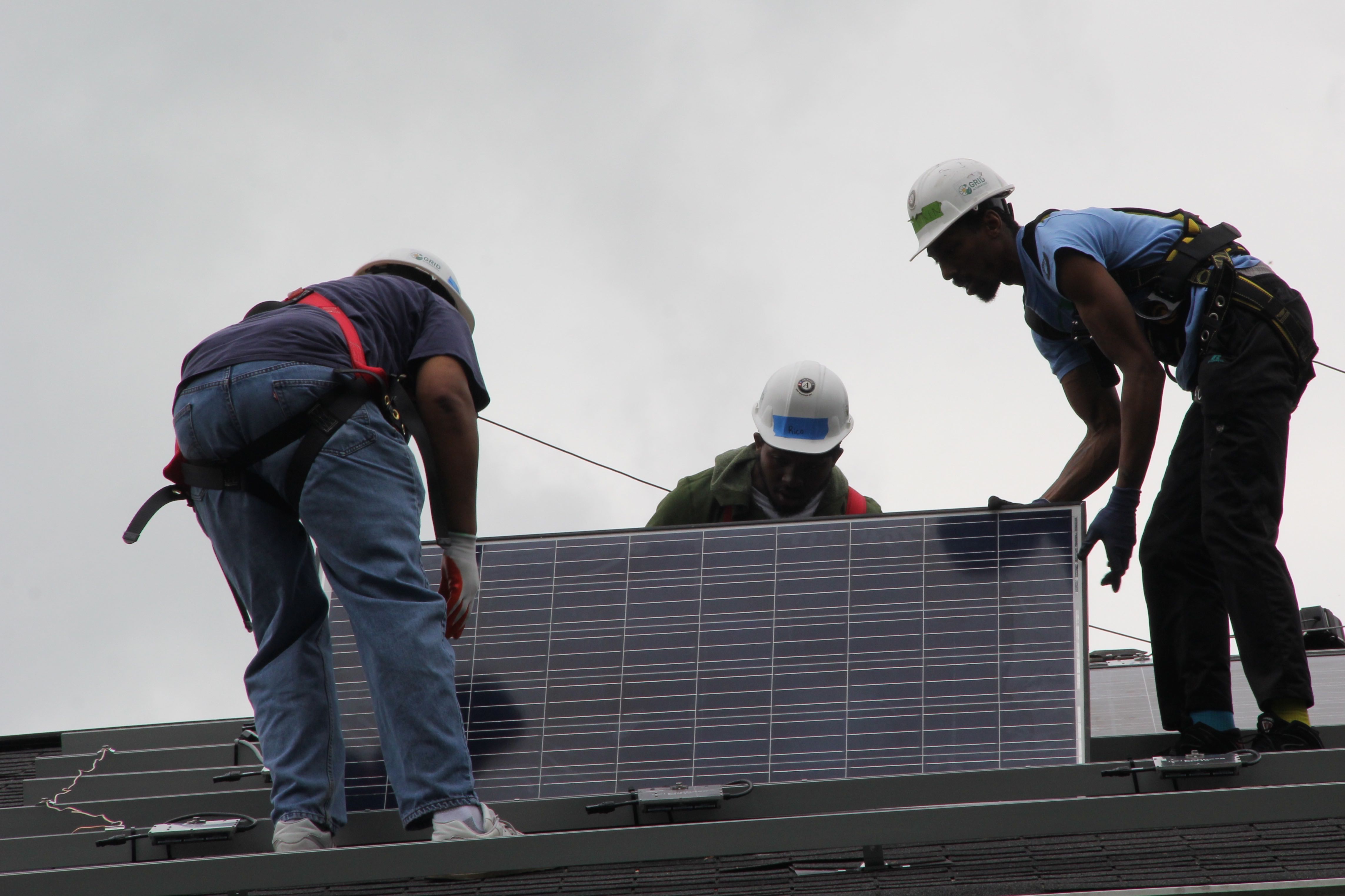WASHINGTON — In a Northeast Washington, D.C., neighborhood where you can still get a house for less than $100,000, one owner recently gave his two-story home an expensive upgrade: $30,000 worth of solar panels.
“As long as I am getting the energy as I was getting before, and I can save a little bit on my energy bill, it seems to be a good idea,” said homeowner Anthony David, admiring the solar panels lining his roof top.
At his red brick house, David this week was joined by the Solar Energy Industries Association and the GRID Alternatives, a nonprofit organization that aims to make renewable energy accessible to low-income families, for the launch of #MillionSolarStrong, a campaign celebrating and promoting the growth of the solar industry in the U.S. Thanks to GRID Alternatives, David’s expensive solar panels cost him nothing out-of-pocket.

Workers check solar panels at a home in Northeast Washington, May 3, 2016. (Xiumei Dong/MNS)
The United States now has one million solar power installations, many of them – like David’s — passive solar which supplements traditional power sources.
Just north of the nation’s capital, one of the world’s first residential solar photovoltaic systems, “Solar One,” was installed in 1973 at the University of Delaware. While it took solar 43 years to reach the one million mark, industry experts believe the number will grow rapidly to two million solar installations in 2018.
According to the GW Solar Institute at George Washington University, the installation cost of solar has dropped more than 70 percent in the last decade.
The falling prices, along with federal financial incentives and technological innovations are catalysts that drive the growth. By 2020, America is expected to generate enough electricity from solar to power 20 million homes, according to the solar energy association.
“That’s a reasonable target given the recent solar development we continue to see,” said Chelsea Barnes, a policy researcher with EQ Research.
At the state level, a number of governors are expanding their renewable portfolios to require increased production of energy from renewable sources, such as solar, wind power, biomass and geothermal.
A recent report from the Lawrence Berkeley National Laboratory in California, shows that financial incentives and other actions taken by states to boost renewable energy were responsible for more than over half the increase in all renewable electricity growth since 2000. Solar made up 30 percent of it.
Industrywide, the demand for renewable energy is growing in response to efforts to reduce carbon emissions and ease dependence on fossil fuels. Solar is among the most popular of the alternative energy sources.
“Solar energy is much more flexible” than other renewables, Barnes explained, adding that it’s especially appealing to homeowners, many of whom can accommodate the panels on their roofs. “A lot of people like to have their own solar energy so they know where the energy is coming from.”
In Cambridge, Massachusetts, Francis O’Sullivan, director of research and analysis at the MIT Energy Initiative, said the increasing shift toward energy independence and interest “in the concept of having a greater resiliency in your power supply” are also driving the move toward renewables.
As the prices fall and the technology becomes more accessible, consumers are becoming more interested in solar power, O’Sullivan said. Those who choose to have the panels installed on their homes have the option of sending excess power “into the grid” for later use, potentially allowing them to continue to save on electricity even during times when the panels aren’t generating much power.
David, a gardener for the National Park Service, said his goal is to save about 50 percent with the system installed. But there’s another incentive as well.
“I feel by me going green, it will catch on in my neighborhood. It might inspire other people to do it,” said David.


